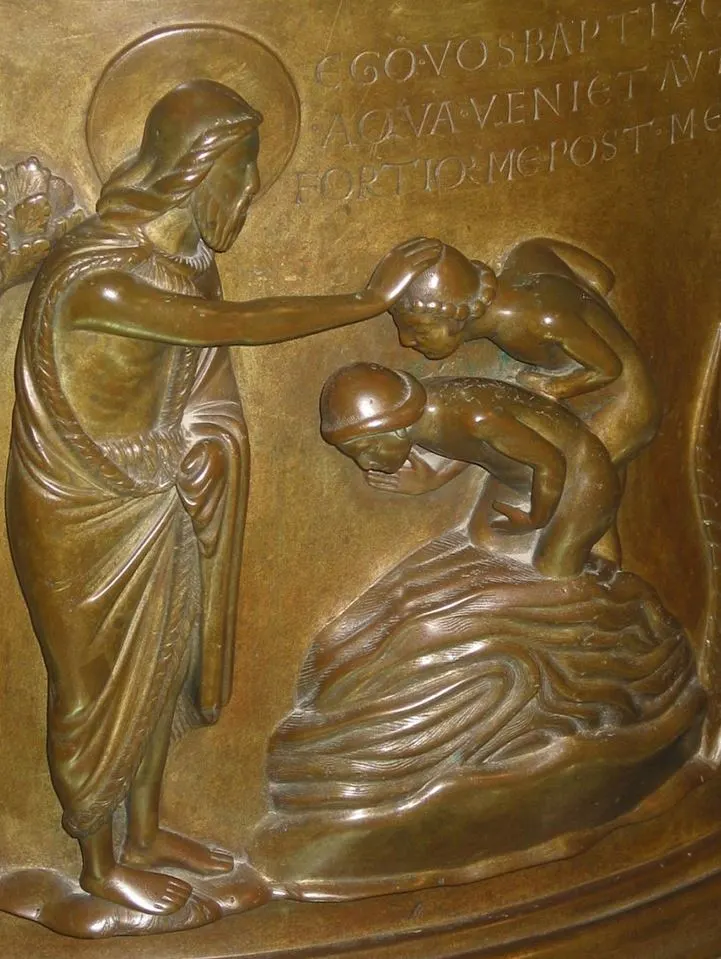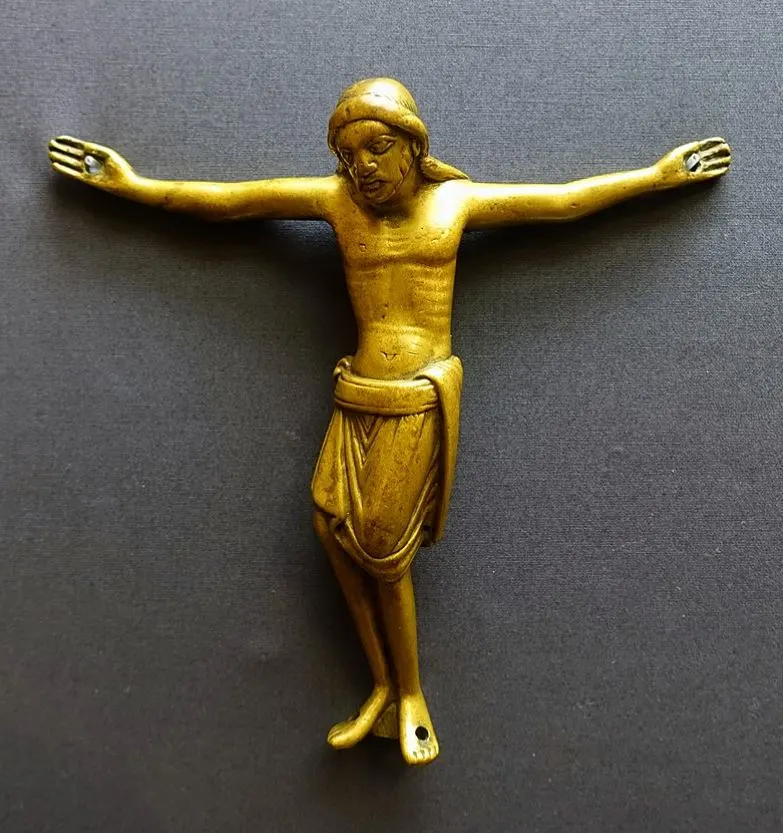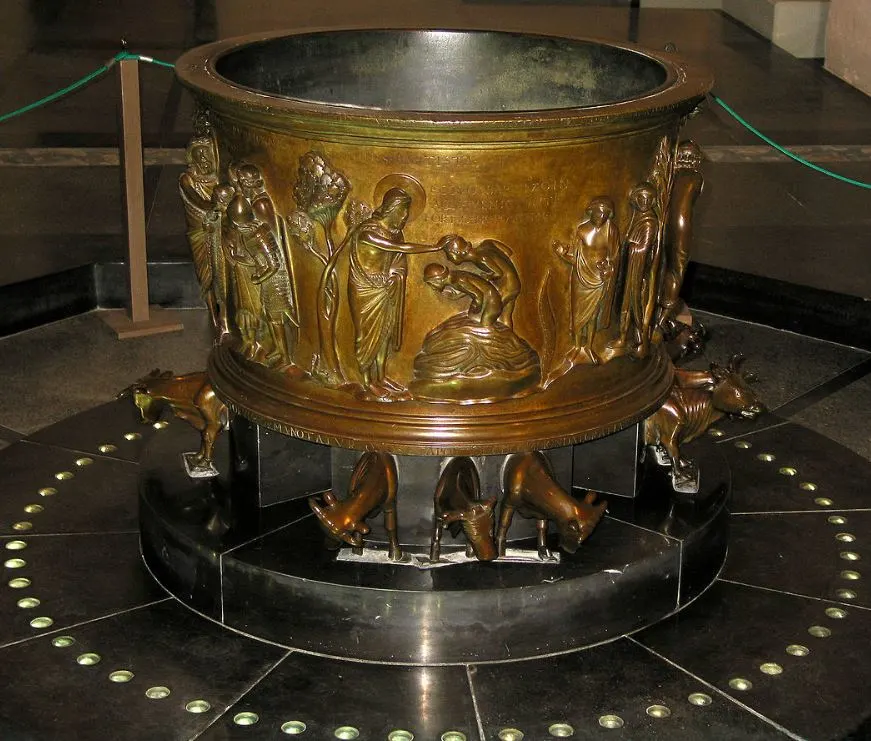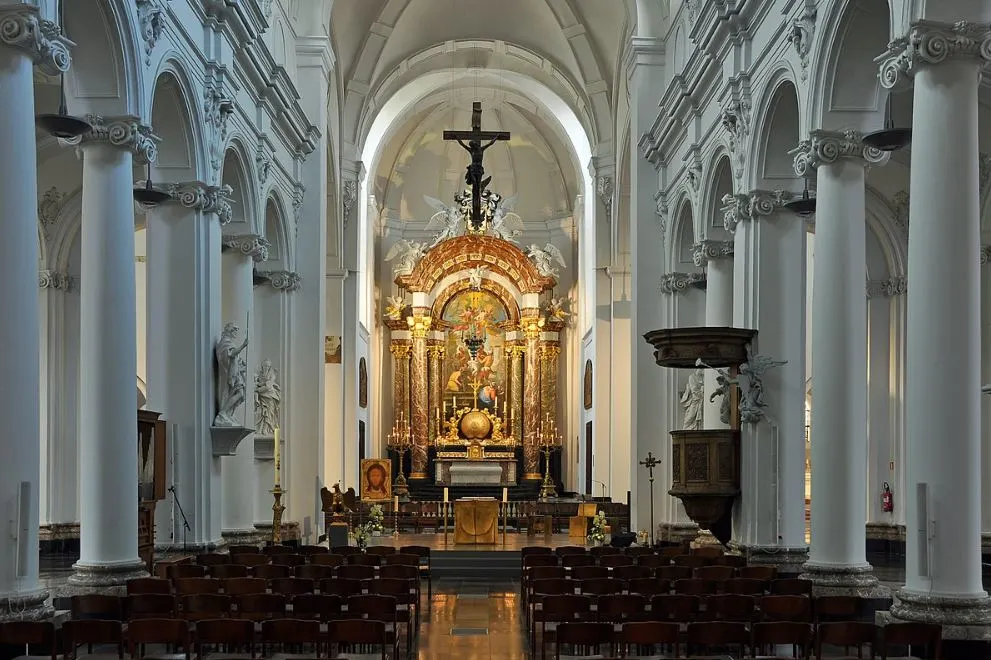If you plan to visit the city of Liège in southeastern Belgium, then you surely have to enter a fascinating church just north of the city’s historical heart.
Here you can find one of the most remarkable Romanesque artworks ever produced, a baptismal font that can be described as the epitome of Mosan art.
This part of Europe was the center of metalwork production in the 12th century and this is one of the best examples of the craftmanship artist’s possessed during this period.
Let’s take a closer look at some of the most interesting facts about the Baptismal Font at St Bartholomew’s Church, a stunning medieval artwork located in a famous landmark in Liège.
1. It’s located in a Romanesque church called the Church of Saint Bartholomew
The Baptismal Font at St Bartholomew’s Church is located in a remarkable Romanesque building just north of the city center of Liège, Belgium.
The city was established near the confluence of the Meuse and Ourthe Rivers and has been an important city in the region ever since the Middle Ages.
The city is home to 7 collegiate churches, several of which date back to the Romanesque era. This was a period in which Liège was growing significantly as it became the capital of the Prince-Bishopric of Liège.
The Collegiate Church of Saint Bartholomew was constructed outside of the medieval city walls and incorporates a distinctive Romanesque-Ottonian architectural style.
The core structure was completed in the 11th and 12th centuries and the building has been modified several times over the centuries. The iconic twin towers were completely renovated in 1876.


As the name of this remarkable work of art implies, it’s an item commonly found in churches that are used for baptism.
Because of this, it depicts 5 different scenes that are related to important baptisms in the history of the Christian faith. These are:
- John the Baptist preached to 4 people.
- John baptized two kneeling neophytes.
- John the Baptist baptizing Jesus Christ.
- Saint Peter baptized a Roman Centurion named Cornelius.
- Saint John the Evangelist baptized a philosopher named Craton.

3. There’s something remarkable about the style in which it was completed
Even though the Baptismal font at St Bartholomew’s Church in Liège is considered to be one of the greatest examples of Mosan Art in history, it does feature a remarkable style.
It was commissioned in the early 12th century by Abbé Hellin, the parish priest in Liège at the time, and completed between 1107 and 1118.
This was a period in history shortly after the completion of the First Crusade (1096-1099) and this might explain the Byzantine influence of this baptismal font.
It features high relief and was cast using the lost wax casting technique in either brass or bronze. The entire basin was cast in a single piece.

4. The work has been attributed to a local artist but this has been contested
The traditional attribution of this baptismal font has been Renier de Huy, a man who was active in the Meuse Valley in the early 12th century.
Little is known about his life and only one piece of art has been positively attributed to him, a small bronze crucifix at the Schnütgen Museum in Cologne, Germany.
If it was completed in the region of Liège then it might also have been the work of Godefroid de Huy, another Mosan goldsmith.
Renier de Huy has generally been accepted as the creator because he was identified as a goldsmith in 1125 and because he was identified as such in a chronicle in the 14th century.

5. Was the baptismal font produced in the capital of the Byzantine Empire?
Because of the remarkable style of the work, some art historians have suggested that it might have been produced in Rome instead of the Valley of the Meuse River.
The classical poses and garments worn by the depicted figures strengthen this theory. In 1993, researchers uncovered that the material to produce this work was mined in either Sardinia or Spain.
The remarkable fig trees that appear in the work have even made historians suggest that it was produced in Constantinople, the capital of the Byzantine Empire, and brought to Liège at a later date.
The debate is still ongoing, even though the most plausible explanation is that it was created by Renier de Huy in Liège in the early 12th century.

6. How big is the Baptismal Font at St Bartholomew’s Church?
The basin is not that big, especially compared to some of the huge bronze doors that were completed during the Middle Ages.
It only has a height of about 60 centimeters (23.62 inches). It slightly slants towards the base and the diameter at the top is 91 centimeters (36 inches).
The stone plinth on which this artwork rests was originally decorated with 12 oxen but two have gone missing.
These were integrated as a reference to the 12 oxen of the so-called “Molten Sea,” a basin at Solomon’s Temple in Jerusalem which was a very similar work of art.

7. The artwork was only moved to its current location in the early 19th century
Although this baptismal font is referred to as the Baptismal font at St Bartholomew’s Church, it wasn’t commissioned to decorate this church in Liège.
Upon completion, it was placed inside Saint Lambert’s Cathedral, the main cathedral in the city for multiple centuries.
This church was located right next to the former Prince-Bishops’ Palace until it was destroyed during the French Revolution in 1794. This space is now occupied by the Place Saint-Lambert.
The baptismal font was spared during this devastating event and moved to its current location in 1804.

8. It features an early version of a remarkable element in the history of Western art
The baptismal font in Liège is still used for baptisms today and is a remarkable work of art to behold. The scenes were completed in very high relief and one of them sticks out.
The scene in which John baptizes Jesus Christ features the head of God the Father who is identified as “PATER.”
This was one of the first depictions of God in the history of Western art which is quite amazing.

